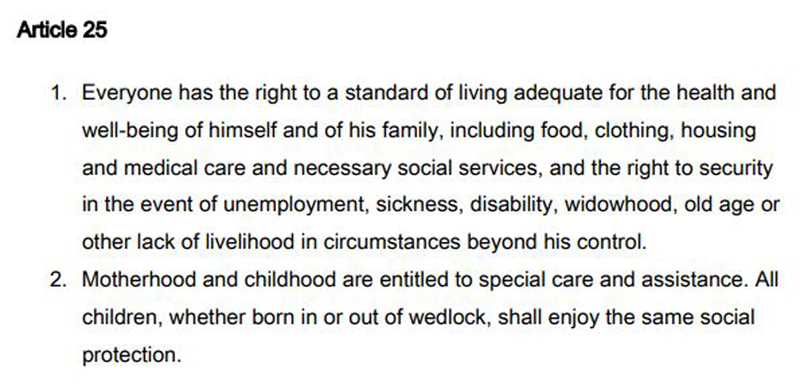Nothing like starting an article by quoting the Universal Declaration of Human Rights (UDHR)! Article 25 is an item of note.

The right to good health is just as important as equality, freedom, life, liberty, recognition, etc. However, wealth and health have long been inseparable bedfellows. That leaves those of inadequate economic means left to languish in “a standard of living [in]adequate for the health and well-being of himself and his family.”
This is especially true for homeless individuals.
‘Homelessness Harms Health’
The link between homelessness and poor health is hardly a new finding. As far back as 1988, the study Homelessness, Health, and Human Needs made this comment:
“Homeless people are at relatively high risk for a broad range of acute and chronic illnesses … In examining the relationship between homelessness and health, the committee observed there are three different types of interactions”:
- Some health problems precede and causally contribute to homelessness
- Others are consequences of homelessness
- Homelessness complicates the treatment of many illnesses
The study contained an example of how a relatively minor medical issue can morph into something much more serious as a result of homelessness.
“Doris Foy’s varicose veins occasionally result in swollen ankles. When homeless, she sleeps upright, and her legs swell so severely that tissue breakdown develops into open lacerations. She covers these with cloth and stockings—enough to absorb the drainage but also to cause her to be repugnant to others because of the smell and unsightly brown stains. She is eventually brought to a clinic by an outreach worker. When the cloth and stockings are removed from the legs, there are maggots in the wounds. She is taken to the emergency room of a hospital, where her wounds are cleaned.”
Notice the rapid descent from an easily treatable condition to symptoms requiring a hospital stay. (A pair of $13.79 compression stockings on Amazon could have done the trick for Ms. Foy.)
As a 2018 study out of the UK found, the very state of being homeless can be the most impactful antagonist to obtaining and maintaining adequate health.
“People living in damp, cold, or overcrowded housing experience greater physical risks to health, and strains on mental health occur through insecurity and personal debt. Associated health effects include [among other problems] respiratory conditions, depression, anxiety, and unintentional injury.”
Canada’s Homeless Hub agrees homelessness adversely affects both short and long-term health. The organization provides a laundry list of health concerns resulting from living rough. The website notes that while deaths among the homeless are occasionally due to extreme cold, homeless deaths “are mainly the result of injury, and the rigors of street life. Climatic conditions, psychological strain and exposure to communicable disease create and lead to a range of chronic and acute health problems, including injury from cold, tuberculosis, skin diseases, cardio-respiratory disease, nutritional deficiencies, sleep deprivation, musculoskeletal pain and dental trouble.”
Studies confirm it’s less of a question of whether homeless people will get sick, but when. What can help reverse the directly proportional relationship between being homeless and ill?
Thankfully the recent Street Medicine movement has helped to mobilize patient-first medical practitioners interested in bringing healthcare services to those on the street that need it most. Apart from getting people indoors and housed, Street Medicine is making good strides in providing quality healthcare for homeless individuals.
A 2018 study entitled “Reading Nutritional Labels: A Predictor of Health and Wealth?” correlated results of surveys between those who habitually read Nutritional Fact labels and those who didn’t. Researchers found people who read those labels were more likely to have higher health practice scores and financial scores. They were also more likely to have a higher education and income than those who didn’t read them.
It’s a known fact that homeless people are not exclusively undereducated. In fact, some homeless people are highly educated. Needless to say, the disparity between readers of nutritional labels and non-readers has little to do with literacy. But it may reveal how nutritional education can help improve dietary choices of those in lower income brackets.
Although reduced income means reduced buying power, understanding how healthier purchasing practices can contribute to better real-world health may play a role in empowering people across the whole socioeconomic spectrum to obtain and maintain what the UDHR referred to at the outset: a standard of living adequate for their health and well-being.












